Rode Rickshaw, Painted Film Posters: ‘How I Reached Los Angeles to Display My Gond Art’
Artist Venkat Raman Singh Shyam once worked odd jobs to get a square meal. Today, he paints modern Gond art that can be found at the Los Angeles Country Museum of Art, the National Gallery in Ottawa and the Queensland Art Gallery.
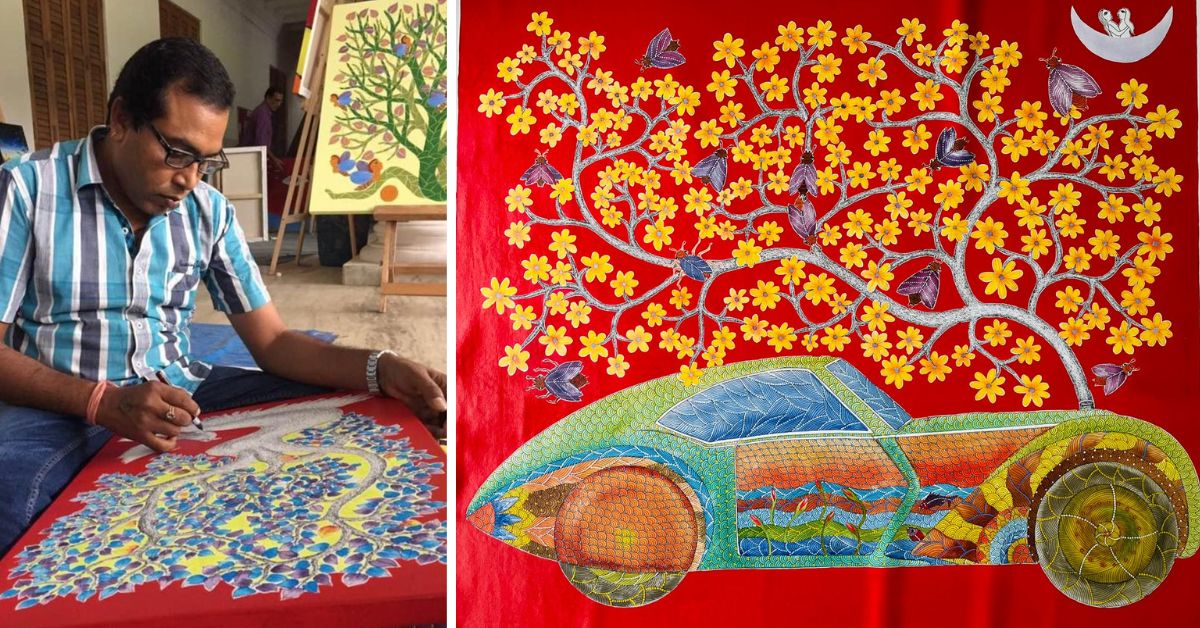
As we enter Venkat Raman Singh Shyam’s studio in Bhopal, Madhya Pradesh, we stop short at the sight that greets us. A 30 ft expanse with rolls of paper, silk and canvas stacked together, paintings that are done by the artist, unframed and awaiting their chance to be displayed. In the centre of the room, sits the 52-year-old Gond artist, wielding his brush as he fills canvases with deft strokes of colour and creates art that tells a story.
For Venkat Raman, who started his painting journey in Bhopal 36 years ago, life has come full circle.
But the journey was no mean feat.
Having grown up in the Gondwana land of Sijora in Eastern Madhya Pradesh, Raman shares that Gond art was once called bhiti chitra (wall painting) as it was done on walls and it was only later that it started to be known by its current name.
He was never a stranger to painting, as it seemed to be in the family’s genes. While his maternal uncle was a painter whom young Raman would keenly observe at work, on the paternal side there was the late Jangarh Singh Shyam, a contemporary Indian artist and the pioneer of Gond art.
At a young age, Raman would replicate the sights of the village onto paper and sometimes the walls, despite having no formal education in the same.
Then in 1986, his avenues opened up when his paternal uncle visited his home.
A visit that shaped Raman’s art trajectory
Recounting the incident, Raman Singh says his uncle Jangarh had come to see his younger brother who was also Raman’s father.
“I wasn’t at home at the time, but when he saw my paintings that were in the hall, he asked my father who had done them. My father replied, Raman.”
Jangarh spotted talent on the mud walls of the home and asked for the 16-year-old to be sent to Bhopal where he would work closely with him to learn the intricacies of their pride — Gond art.
Thus began Raman’s life in Bhopal, learning under the guidance of his uncle. After three long years, he decided it was time to move on.
The next part of his life took shape in Delhi, where he wanted to make a name for himself in the world of art.
However, there were a series of challenges that awaited.
The struggling artist was now faced with hardships and was now living from hand to mouth. “I would take on multiple jobs, sometimes taking up labour work, while other times cooking, being a rickshaw driver, painting homes, etc,” he says, adding that the aim was to get a square meal every night.
In the attempt to survive in the city, Gond art had taken a backseat.
But the artist’s love for painting still thrummed in the background, and it was one day that he thought, ‘Why not take up painting jobs?’
Sometimes film posters, other times hoardings, Raman was now painting commercially.
But his time in Delhi was cut short when he was struck with a bout of cerebral malaria in 1993, after which he returned to Bhopal to be a sign board painter, a job that he would pursue for the next 8 years until another significant event would shake him up.
‘The day I got the news of my uncle’s death, I put down my brush.’
In 2001, Raman Singh Shyam was going about his usual day when he received the news that his uncle Jangarh, the very person who had inspired him to grow in the field of Gond art, was no more.
He quit being a signboard painter and decided to continue the legacy of his uncle from then on.
But while he had a clear intent this time, he missed the acceptance of people.
“People were not very receptive to my work,” he says, recounting how they would snub him and not permit him to showcase his works in galleries.
“You are a new artist,” they would say.
While trying to create a niche for himself, Raman decided to write his book ‘Finding My Way’ and the same released in 2016, after 10 years of researching, thinking, writing down his thoughts, and looking for a publisher.
The book was a success, but people still hadn’t quite accepted his art.
“What people missed is that my art bore no resemblance to my uncle’s,” he says.
Raman acknowledged this fact. “I had gone back to Gond art after years. My line strokes had changed, and the hand patterns were different. It was tough.”
This was when he decided to follow his late uncle’s advice, ‘apni khud ki pehchaan banao’.
So in 2004, the artist decided it was time to tie old learnings with new ones and create a niche for himself in museums and people’s hearts alike.
“I started visiting museums abroad, seeing how famous painters and legends such as Picasso had painted their works of art. I began looking at my art, not from the eyes of the painter but the eyes of the people,” he says.
And when he returned to Gond art this time, he was fuelled by a new zeal.
“I would keep the roots of my paintings the same, the traditional Gond inspiration. But I would adapt the art, play with colours, adopt wash techniques instead of flat colour, change motifs, make linear art into circular designs, and bring in an identity of my own,” he notes.
Were his art pieces accepted by people this time around?
The answer lies in his paintings that went on to be displayed at famous galleries and historic places around India — the Chhatrapati Shivaji Museum in Mumbai, Chitra Kala Parishad, Bengaluru, Bharat Bhavan, Bhopal, the State Museum in Jhansi and more.
From the homeland, Raman Singh Shyam’s art reached foreign shores too.
His collections can be found at the Los Angeles Country Museum of Art, the National Gallery in Ottawa and the Queensland Art Gallery.
He also went on to win prestigious awards such as the State Award of Madhya Pradesh in 2002, and the Tallest Story Competition Trophy from Inverness Film Festival, Scotland in 2007.
After having come so far from his humble beginnings in the village, Raman Singh Shyam says he wants to create art that moves people. “Through the medium of art, I want to convey the problems that our planet is facing. I want my art to propel people to work towards solutions.”
Colours with a message
Here’s a look at the artist’s body of work that depicts Gond art with modern meaning.
1. Life under the tree
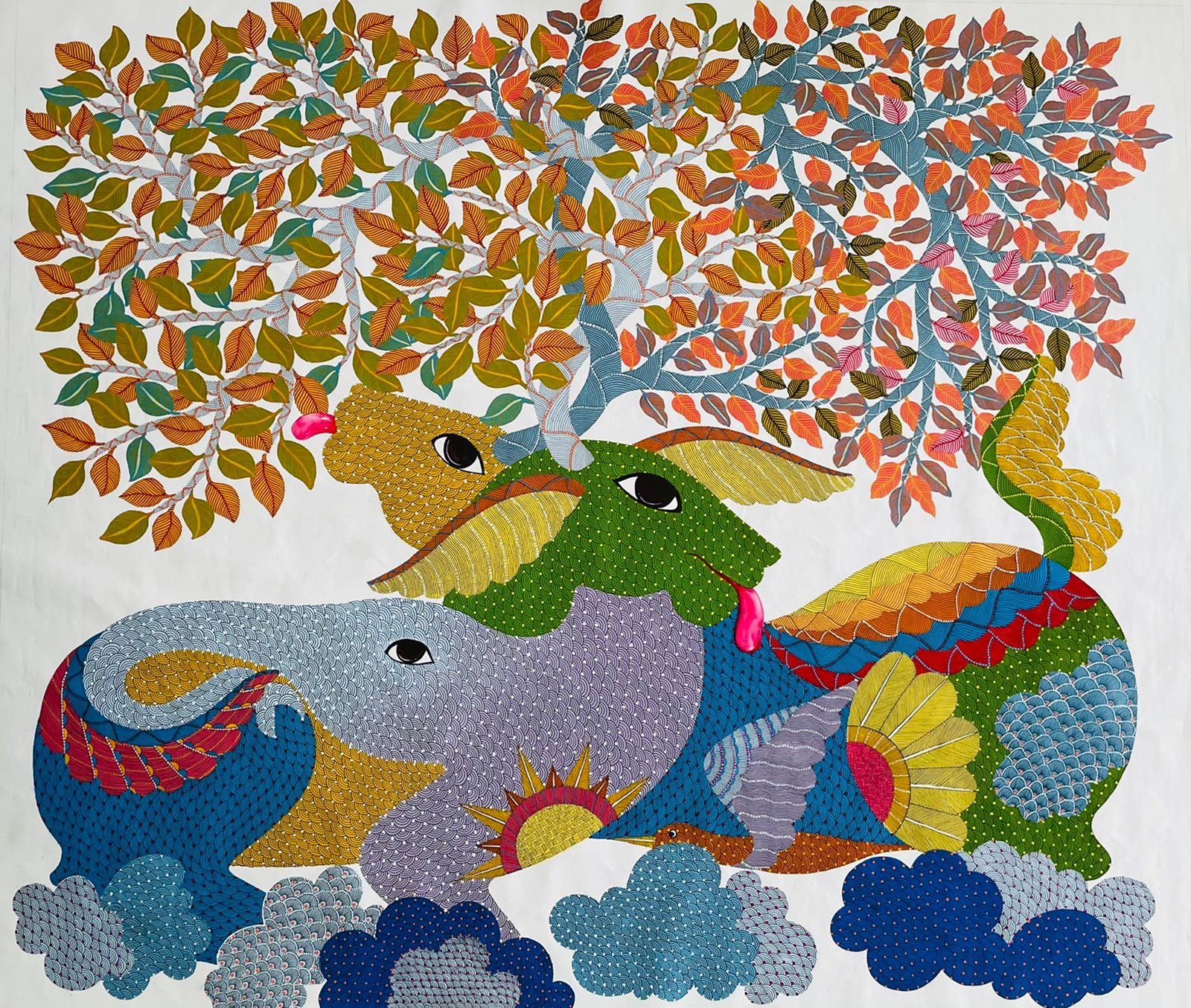
The painting is an ode to nature. The message that the artist wanted to highlight through it is that all living organisms are nothing without this driving force. The blue patches in the painting depict the sea, and clouds and signify that without nature, life will cease to exist.
2. Hansraj Ghora
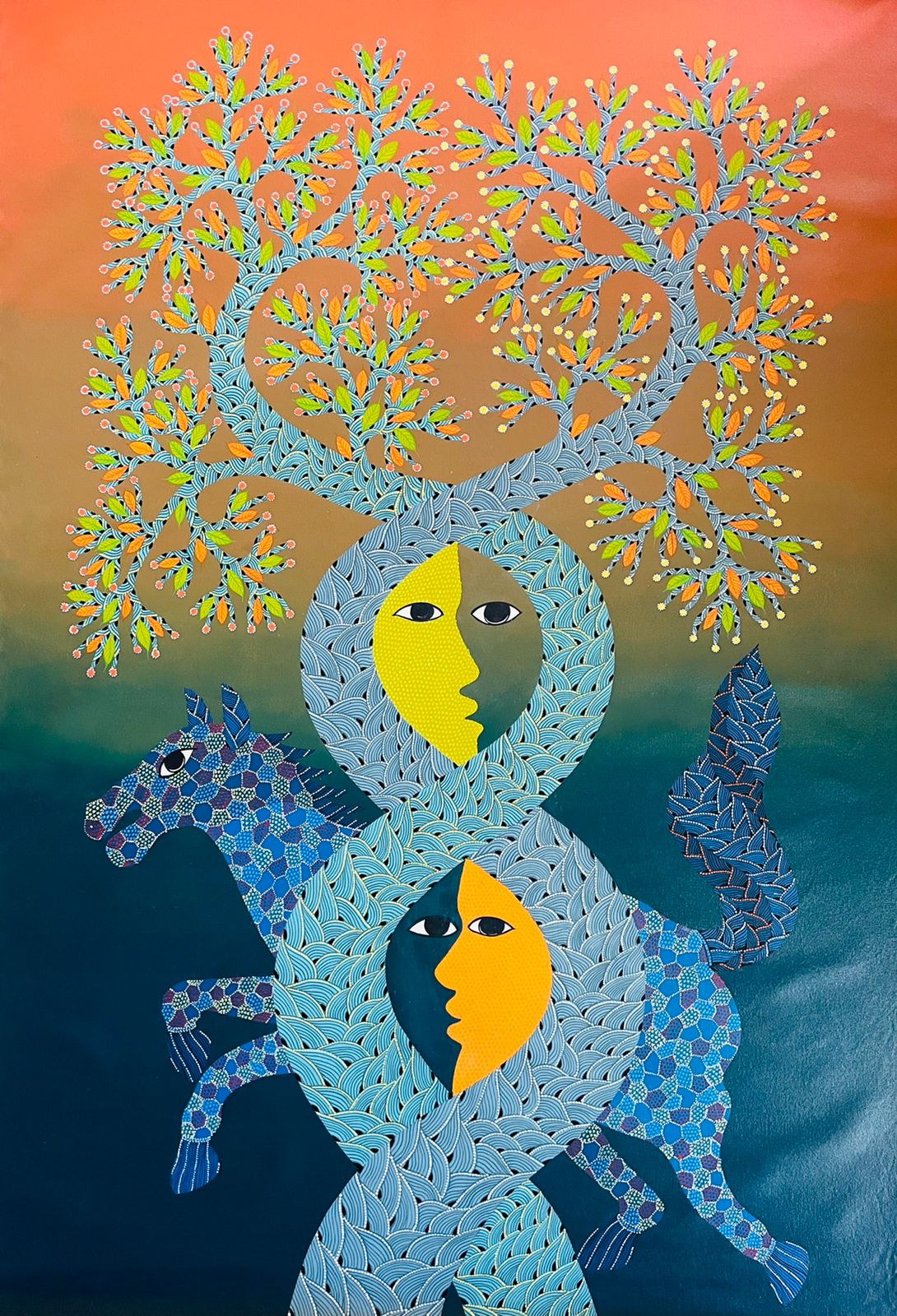
The painting is based on the story of the Gond Raja, Heerakhan Kshatriya. The king possessed the same capabilities as Hansraj Ghoda, a horse that could take flight and making anything possible due to the divine power it was bestowed with.
3. Motherhood
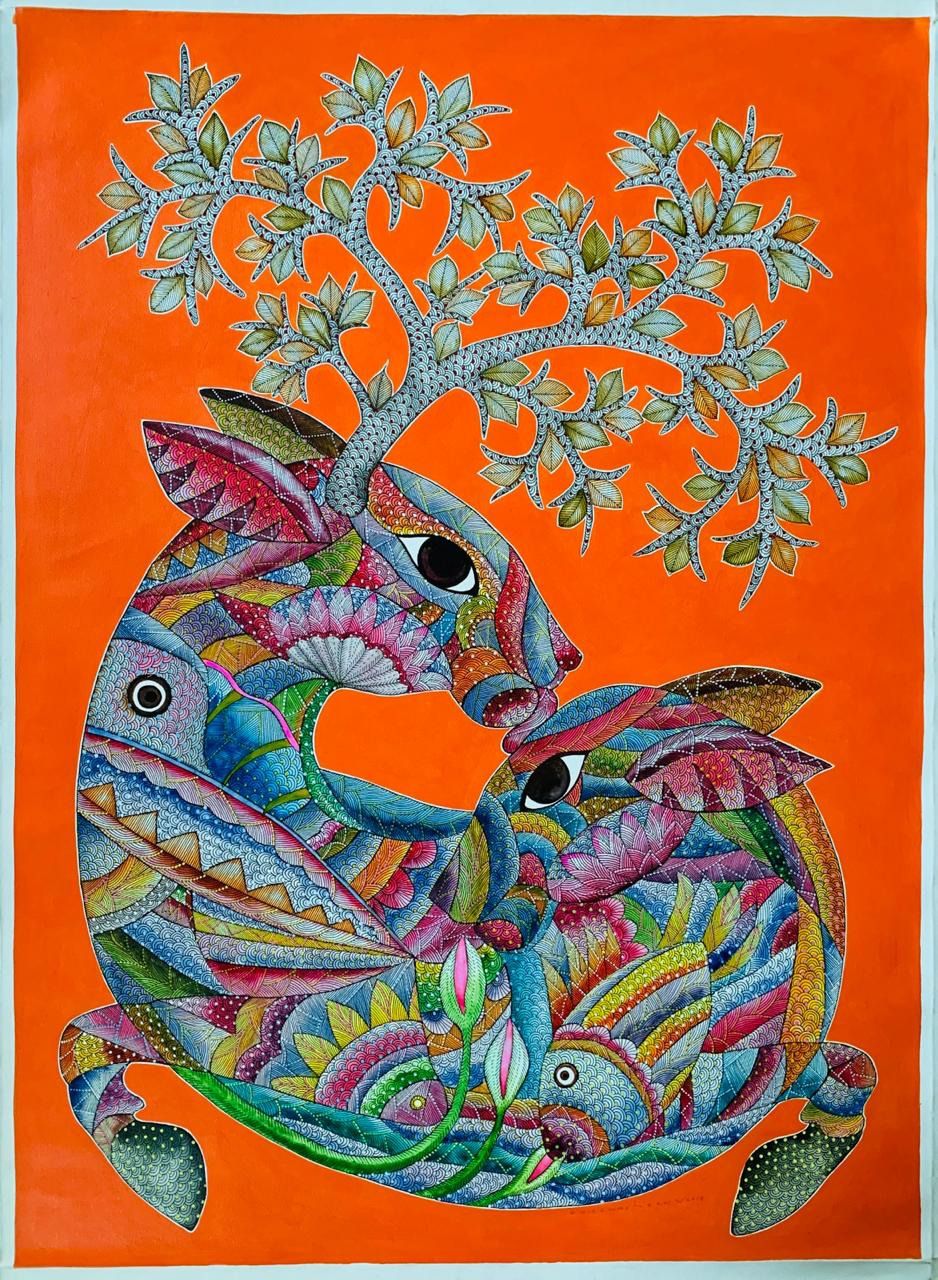
The painting depicts the elements of nature, with yellow being the soil, blue the water, and orange being fire. The white borders convey the expanse and infinity of the sky. The painting also sends out the message of motherhood, through the deer and the fawn. “I wanted to tell people that mother’s love is the same as nature’s love for us. It is ever giving,” says Raman.
4. New era
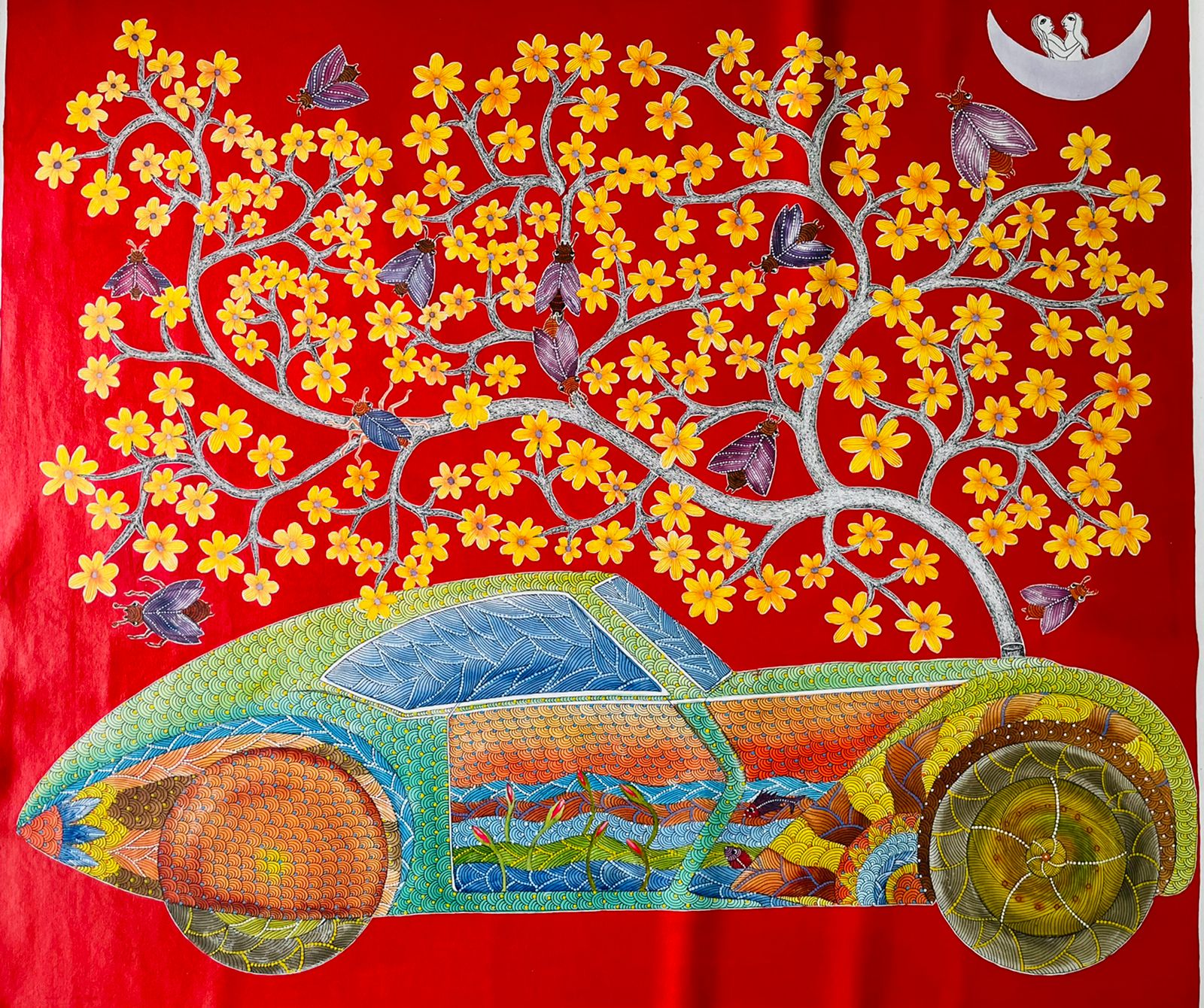
At first glance, you will notice a car and flowers. But look closely, and you will see butterflies intertwined in the flowers. “Nature always has a beginning,” says Raman. The car signifies the advancement that human civilisation has come up with. However, no matter how advanced we get, nature will always be the ultimate.
“The world can be destroyed in a second,” says Raman. “It can also be rebuilt in a second.”
5. Elephant family
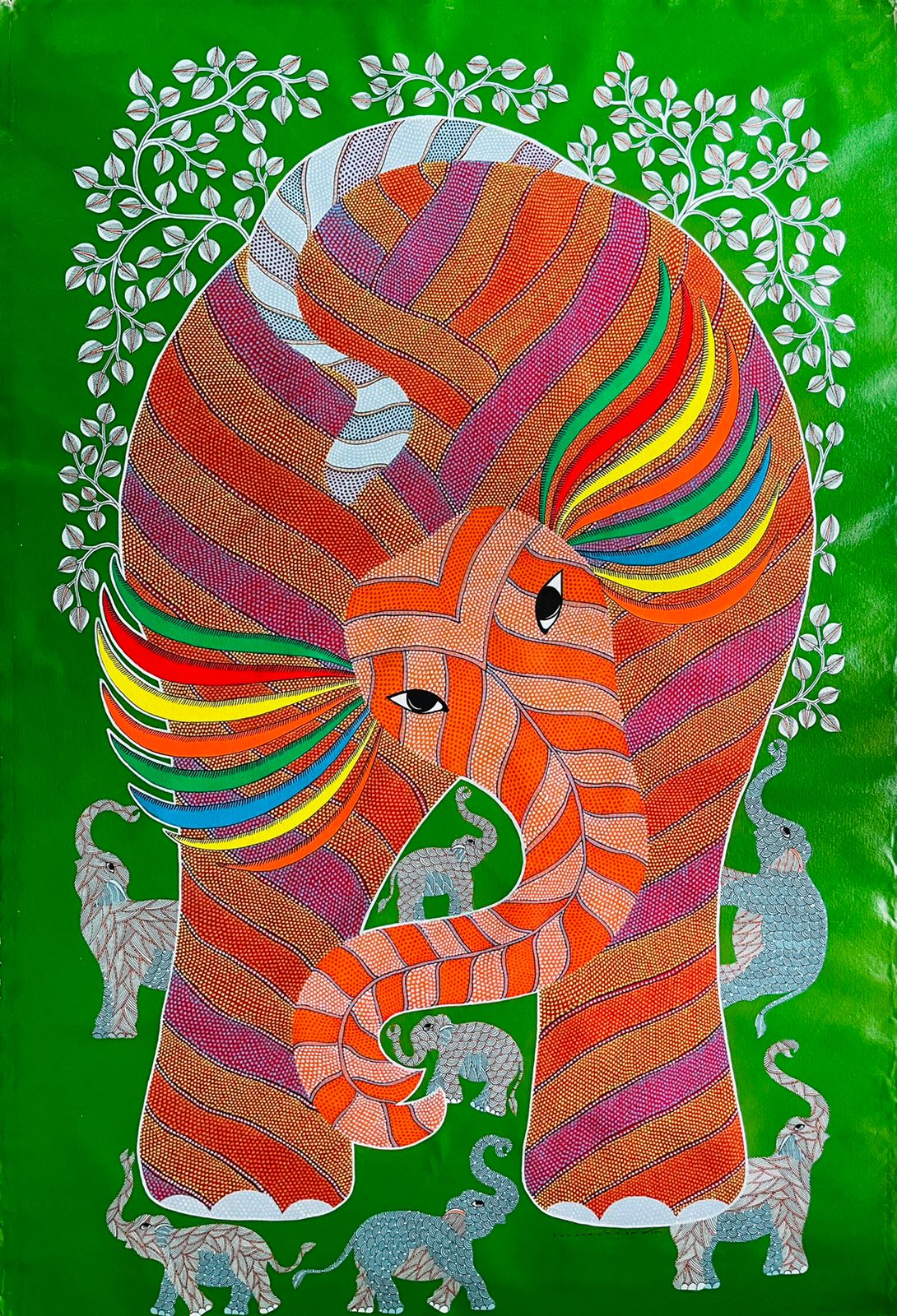
In Kerala, the instances of elephants moving out of the forest area and into urban areas are increasing. “This is because they do not have a place to stay,” says Raman. “We have occupied their areas.”
He adds that the painting is a message for people that plants should be grown for these animals to have their space back.
6. Tiger’s tail

Through this work of art, Raman wanted to portray how every animal’s tail has a story of its own. “The tail is always dear to the animal, as it performs an integral function of keeping it safe and serves a unique purpose,” he says.
“The tail of the animal is also its tale.”
7. Crow biology

An interesting fact that Raman noticed during his growing up years in the village, was that when crows find a rodent or bird dead, before they can get started devouring the animal, they hit the eye. “Crows have a notion that the eye is watching them while they consume the prey,” he says. “By eating the eye first, it ensures it can enjoy the meal in peace.”
8. Mother Earth
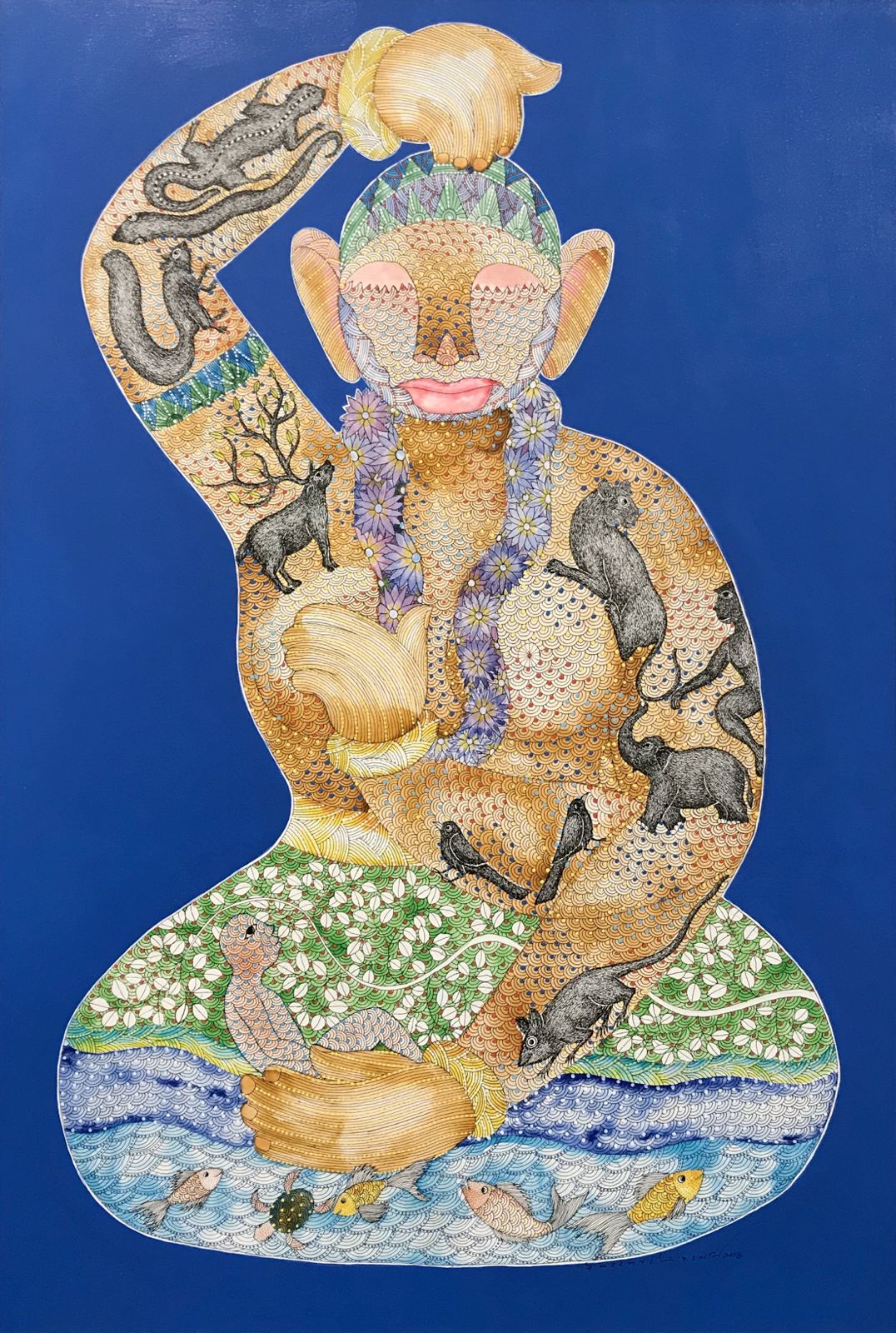
The painting pays homage to Mother Nature. “While I was in the village, I would see greenery, and blue and forest everywhere, but now I see barren land wherever I go,” says Raman.
“Humanity is suffocating Mother Nature, while she is the same one that nourishes us. But despite the mistakes we make, she never gives up on us. This is just like a mother who never gives up on their children, no matter how often they go wrong.”
9. COVID pandemic

The painting portrays the evils of the COVID pandemic and how it forced us into confined spaces. “The person in blue is infected and anyone who goes near them can get infected too,” explains Raman. “The birds in the cage represent us. While we do have the ability to go anywhere, we are locked up in cages as moving around would be harmful.”
The artist goes on to add that in Adivasi culture, guests from outside are always expected to wash their hands before entering the home, while the namaskar is a practice followed religiously.
“When people forget their roots, the infection starts to spread,” he adds.
10. Story of the tiger
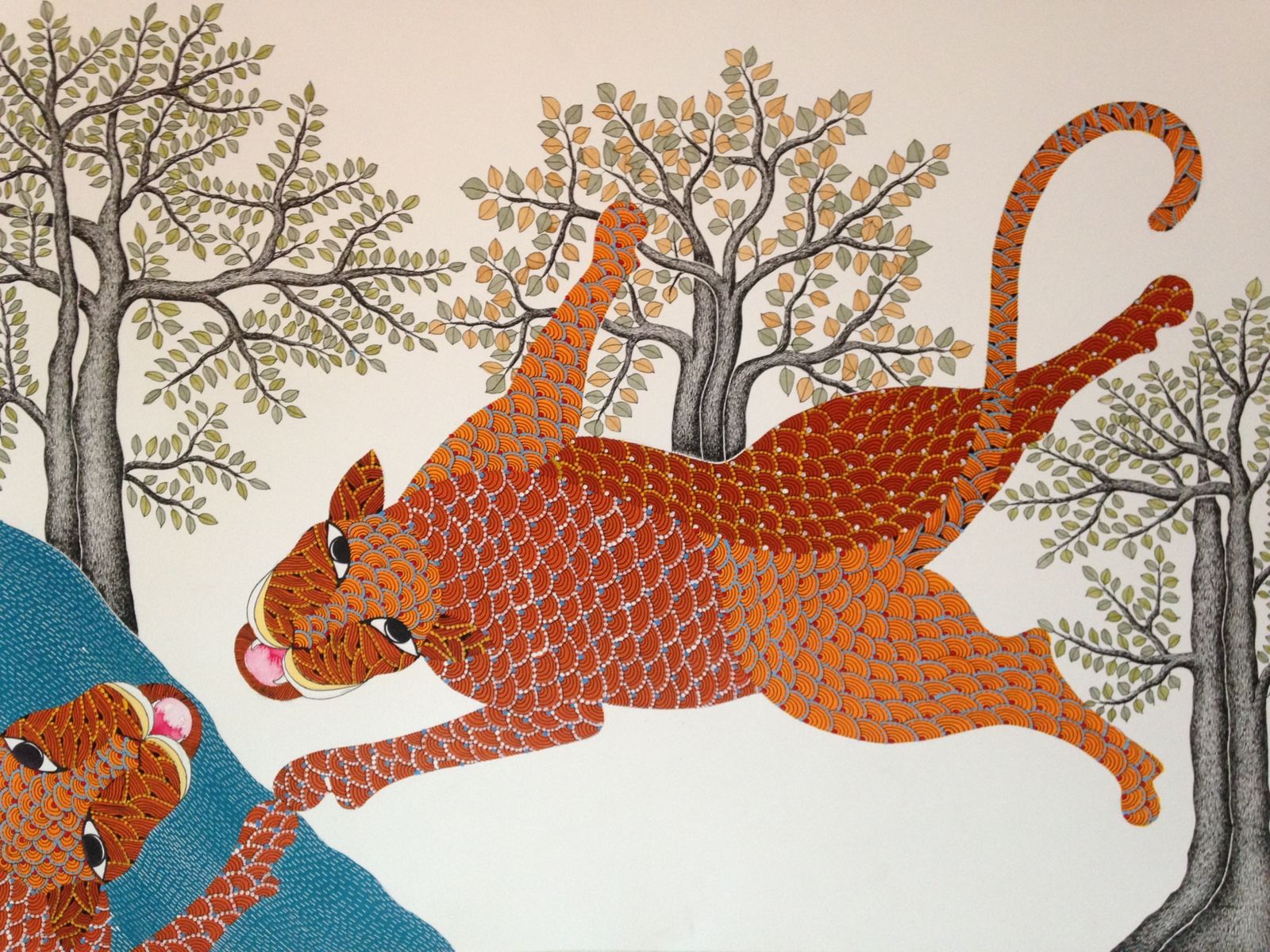
In the jungle, there is an irony that exists. When the tiger kills its prey, the fox has a chance to eat the leftovers near its cave. However, the fox tends to get annoyed with the tiger and hatches a plan to kill it. It takes it to a nearby river and shows the animal its own reflection, telling it that there is a new tiger (in the water) that is a threat to it. The tiger, gets annoyed and jumps into the water and drowns.
“But while the fox has managed to get the tiger out of the picture, it does not realise it has also got rid of its source of food,” says Raman Singh.
Edited by Yoshita Rao
If you found our stories insightful, informative, or even just enjoyable, we invite you to consider making a voluntary payment to support the work we do at The Better India. Your contribution helps us continue producing quality content that educates, inspires, and drives positive change.
Choose one of the payment options below for your contribution-
By paying for the stories you value, you directly contribute to sustaining our efforts focused on making a difference in the world. Together, let’s ensure that impactful stories continue to be told and shared, enriching lives and communities alike.
Thank you for your support. Here are some frequently asked questions you might find helpful to know why you are contributing?


This story made me
-
97
-
121
-
89
-
167











